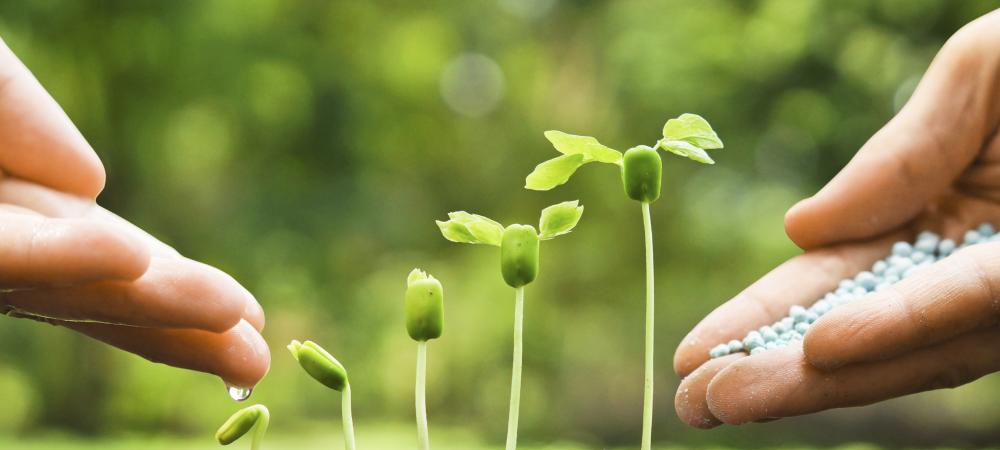When to Fertilize Your Lawn in Texas

Maintaining a lush and healthy lawn in Texas requires a strategic approach to fertilization. The diverse climate across the state, ranging from humid subtropical to semi-arid, influences the timing of fertilizer applications. In this comprehensive guide, we'll delve into the best time to fertilize your Texas lawn, ensuring it receives the nutrients it needs for robust growth and resilience.
Spring Fertilization
Spring marks the beginning of the growing season in Texas, making it a crucial time for fertilizing your lawn. Aim to apply fertilizer in late February to early April, depending on your specific location within the state. Warm-season grasses like Bermuda, St. Augustine, and Zoysia benefit from a nitrogen-rich fertilizer (e.g., 16-4-8) during this period. This kickstarts growth and helps your lawn recover from winter dormancy.
Early Summer Fertilization
As the temperatures rise in Texas, lawns experience increased stress. To fortify your grass against the summer heat, consider a second round of fertilization in late spring or early summer, around May or June. Opt for a slow-release nitrogen fertilizer to provide sustained nutrition. Additionally, including iron in the fertilizer mix enhances color and improves your lawn's resilience to drought conditions.
Late Summer Fertilization
Towards the end of summer, lawns may start showing signs of stress due to high temperatures and reduced rainfall. While it's generally advisable to avoid heavy fertilization during this period, a light application of a balanced fertilizer in August can support your lawn's health. Ensure the fertilizer has a lower nitrogen content to prevent excessive growth.
Fall Fertilization
Fall is a critical season for lawn care in Texas. Apply fertilizer in early fall, around September or October, to fortify your grass for the upcoming winter. Look for a balanced N-P-K ratio and a fertilizer with lower nitrogen to encourage root development. This application aids in storing nutrients for the winter and sets the stage for a strong spring growth.
Winter Fertilization (Optional)
While not as common as other seasons, a light application of a balanced fertilizer in late winter, between December and early January, can provide your lawn with essential nutrients before the active growing season begins. Use a slow-release formula to ensure a gradual release of nutrients during the dormant period.
Additional Tips
- Soil Testing: Regularly conduct soil tests to assess nutrient levels and adjust your fertilizer regimen accordingly.
- Watering Practices: Proper watering is crucial for fertilizer effectiveness. Water your lawn deeply and infrequently to prevent nutrient leaching.
- Grass Type Considerations: Tailor your lawn fertilizer schedule based on the type of grass in your TX lawn, as different species have varying nutrient requirements.
Call The Lawn Care Professionals
Timing is key when it comes to fertilizing your Texas lawn. By following a well-planned schedule that aligns with the state's climate patterns, you can ensure your lawn receives the right nutrients at the right time, promoting health, resilience, and a vibrant appearance throughout the year. Regular monitoring and adjustments based on seasonal conditions will contribute to the long-term success of your lawn care routine.
For professional fertilization services, look no further than Just Right Lawn Care. Our team of lawn care experts can ensure your lawn gets all the nutrients it needs. Contact us today!
FAQ About Fertilizing Your Texas Lawn
Here are some common questions our lawn care experts get regarding lawn maintenance. These answers provide general guidance, but it's crucial to consider specific factors related to your lawn's unique conditions for the best results.
Can I fertilize during the summer months in Texas?
While it's generally recommended to avoid heavy fertilization during hot summer months, a light application of a slow-release nitrogen fertilizer in late spring or early summer can help your lawn withstand heat stress.
Can I fertilize my Texas lawn in winter?
While winter fertilization is not as common, a light application of a balanced fertilizer in late winter can provide essential nutrients before the active growing season. Choose a slow-release formula for gradual nutrient release during the dormant period.
Can I use the same fertilizer for all grass types in Texas?
Different grass species have varying nutrient requirements. Choose a fertilizer with a nitrogen-phosphorus-potassium (N-P-K) ratio suitable for your specific grass type. Warm-season grasses may benefit from higher nitrogen levels.
How can I tell if I overfertilized my lawn?
Overfertilizing can have negative effects on your lawn. Signs of overfertilization include excessive top growth, discoloration (often a dark green or burnt appearance), and increased vulnerability to pests and diseases. If you notice these symptoms, it's advisable to flush the soil with water to dilute the excess nutrients. Adjust your future fertilization practices, ensuring you follow recommended application rates to maintain a healthy and balanced lawn.
How often should I fertilize my lawn during the growing season?
In Texas, a spring application in late February to early April, a second application in late spring or early summer, and a third in early fall are generally recommended. Adjust the frequency based on your grass type and specific lawn conditions.
Is it necessary to conduct soil tests before fertilizing my lawn?
Yes, regular soil testing is advisable to assess nutrient levels and tailor your lawn fertilization regimen accordingly. Soil tests help determine specific deficiencies, ensuring you apply the right nutrients in the right amounts.
What signs indicate that my lawn needs fertilization?
Yellowing, slow growth, and reduced density are common signs of nutrient deficiency. Conduct a soil test to identify specific nutrient needs and adjust your fertilization schedule accordingly.
When is the best time to fertilize your lawn in Texas?
The best time to fertilize your Texas lawn is during the spring, specifically in late February to early April. This period corresponds to the beginning of the growing season, allowing the grass to benefit from essential nutrients as it emerges from winter dormancy.

